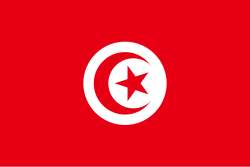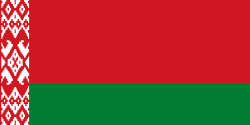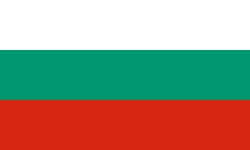Mistrovství světa v atletice 2007
| Mistrovství světa v atletice 2007 | |
|---|---|
| Místo | Stadion Nagai |
| Země | Japonsko |
| Pořadatel | Světová atletika |
| Datum | 24. srpna 2007 – 2. září 2007 |
| Účast | 1 800 |
| Předchozí | Mistrovství světa v atletice 2005 |
| Následující | Mistrovství světa v atletice 2009 |
| Některá data mohou pocházet z datové položky. | |

11. mistrovství světa v atletice (oficiálním anglickým názvem: IAAF World Championship in Athletics Osaka 2007) se uskutečnilo mezi 25. srpnem a 2. zářím 2007 v japonské Ósace. Soutěže probíhaly na stadiónu Nagai a v jeho okolí. Mistrovství se zúčastnilo 1978 atletů z 203 zemí a oblastí,[1] včetně 22 českých reprezentantů.[2][3] Nejúspěšnější zemí se staly Spojené státy americké, Česká republika získala dvě zlaté a jednu stříbrnou medaili.
Česká účast
Medailisté
Muži
Ženy
Medailové pořadí
| Umístění | Stát | Zlato | Stříbro | Bronz | Celkem |
|---|---|---|---|---|---|
| 1. | 14 | 4 | 8 | 26 | |
| 2. | 5 | 3 | 5 | 13 | |
| 3. | 4 | 7 | 3 | 14 | |
| 4. | 3 | 1 | - | 4 | |
| 5. | 2 | 2 | 3 | 7 | |
| 6. | 2 | 1 | - | 3 | |
| 7. | 2 | - | - | 2 | |
| 8. | 1 | 6 | 3 | 10 | |
| 9. | 1 | 2 | - | 3 | |
| 1 | 2 | - | 3 | ||
| 11. | 1 | 1 | 3 | 5 | |
| 12. | 1 | 1 | 1 | 3 | |
| 1 | 1 | 1 | 3 | ||
| 14. | 1 | 1 | - | 2 | |
| 15. | 1 | - | - | 1 | |
| 1 | - | - | 1 | ||
| 1 | - | - | 1 | ||
| 1 | - | - | 1 | ||
| 1 | - | - | 1 | ||
| 1 | - | - | 1 | ||
| 1 | - | - | 1 | ||
| 1 | - | - | 1 | ||
| 23. | - | 2 | 1 | 3 | |
| 24. | - | 2 | - | 2 | |
| - | 2 | - | 2 | ||
| - | 2 | - | 2 | ||
| 27. | - | 1 | 2 | 2 | |
| 28. | - | 1 | - | 1 | |
| - | 1 | - | 1 | ||
| - | 1 | - | 1 | ||
| - | 1 | - | 1 | ||
| - | 1 | - | 1 | ||
| - | 1 | - | 1 | ||
| - | 1 | - | 1 | ||
| 35. | - | - | 3 | 3 | |
| 36. | - | - | 1 | 1 | |
| - | - | 1 | 1 | ||
| - | - | 1 | 1 | ||
| - | - | 1 | 1 | ||
| - | - | 1 | 1 | ||
| - | - | 1 | 1 | ||
| - | - | 1 | 1 | ||
| - | - | 1 | 1 | ||
| - | - | 1 | 1 | ||
| - | - | 1 | 1 | ||
| - | - | 1 | 1 |
Galerie medailistů
- Roman Šebrle oslavuje vítězství v desetiboji.
- Vyhlášení vítězů desetiboje (zleva): stříbrný Maurice Smith, zlatý Roman Šebrle a bronzový Dmitrij Karpov.
- Vítězka v hodu oštěpem žen – Barbora Špotáková.
- Vyhlášení vítězek skoku o tyči (zleva): stříbrná Kateřina Baďurová, zlatá Jelena Isinbajevová a bronzová Světlana Feofanovová.
Odkazy
Reference
- ↑ Weltmeisterschaften von Kaiser Akihito eröffnet; Eurosport.Yahoo.com
- ↑ ČTK, Sport.cz. V nominaci na mistrovství světa v Ósace je 22 atletů. Sport.cz [online]. 2007-08-13 [cit. 2013-08-04]. Dostupné online.
- ↑ HLOCH, Jan, Radio.cz. Atlety trápí na MS nejvíce počasí. Radio.cz [online]. 2007-08-27 [cit. 2013-08-04]. Dostupné online.
Související články
Externí odkazy
 Obrázky, zvuky či videa k tématu Mistrovství světa v atletice 2007 na Wikimedia Commons
Obrázky, zvuky či videa k tématu Mistrovství světa v atletice 2007 na Wikimedia Commons - Oficiální stránky IAAF (anglicky)
- Kompletní přehled výsledků (anglicky)
- Kompletní přehled výsledků (německy)
Média použitá na této stránce
Flag of Jamaica. “The sunshine, the land is green, and the people are strong and bold” is the symbolism of the colours of the flag. GOLD represents the natural wealth and beauty of sunlight; GREEN represents hope and agricultural resources; BLACK represents the strength and creativity of the people. The original symbolism, however, was "Hardships there are, but the land is green, and the sun shineth", where BLACK represented the hardships being faced.
Flag of Canada introduced in 1965, using Pantone colors. This design replaced the Canadian Red Ensign design.
Vlajka Etiopie
The flag of the Dominican Republic has a centered white cross that extends to the edges. This emblem is similar to the flag design and shows a bible, a cross of gold and 6 Dominican flags. There are branches of olive and palm around the shield and above on the ribbon is the motto "Dios,Patria!, Libertad" ("God, Country, Freedom") and to amiable freedom. The blue is said to stand for liberty, red for the fire and blood of the independence struggle and the white cross symbolized that God has not forgotten his people. "Republica Dominicana". The Dominican flag was designed by Juan Pablo Duarte, father of the national Independence of Dominican Republic. The first dominican flag was sewn by a young lady named Concepción Bona, who lived across the street of El Baluarte, monument where the patriots gathered to fight for the independence, the night of February 27th, 1844. Concepción Bona was helped by her first cousin María de Jesús Pina.
The flag of the Dominican Republic has a centered white cross that extends to the edges. This emblem is similar to the flag design and shows a bible, a cross of gold and 6 Dominican flags. There are branches of olive and palm around the shield and above on the ribbon is the motto "Dios,Patria!, Libertad" ("God, Country, Freedom") and to amiable freedom. The blue is said to stand for liberty, red for the fire and blood of the independence struggle and the white cross symbolized that God has not forgotten his people. "Republica Dominicana". The Dominican flag was designed by Juan Pablo Duarte, father of the national Independence of Dominican Republic. The first dominican flag was sewn by a young lady named Concepción Bona, who lived across the street of El Baluarte, monument where the patriots gathered to fight for the independence, the night of February 27th, 1844. Concepción Bona was helped by her first cousin María de Jesús Pina.
Flag of Australia, when congruence with this colour chart is required (i.e. when a "less bright" version is needed).
See Flag of Australia.svg for main file information.Flag of Portugal, created by Columbano Bordalo Pinheiro (1857-1929), officially adopted by Portuguese government in June 30th 1911 (in use since about November 1910).
Finská vlajka
Vlajka České republiky. Podoba státní vlajky České republiky je definována zákonem České národní rady č. 3/1993 Sb., o státních symbolech České republiky, přijatým 17. prosince 1992 a který nabyl účinnosti 1. ledna 1993, kdy rozdělením České a Slovenské Federativní republiky vznikla samostatná Česká republika. Vlajka je popsána v § 4 takto: „Státní vlajka České republiky se skládá z horního pruhu bílého a dolního pruhu červeného, mezi něž je vsunut žerďový modrý klín do poloviny délky vlajky. Poměr šířky k její délce je 2 : 3.“
This is the national flag of Belgium, according to the Official Guide to Belgian Protocol. It has a 13:15 aspect ratio, though it is rarely seen in this ratio.
Its colours are defined as Pantone black, Pantone yellow 115, and Pantone red 032; also given as CMYK 0,0,0,100; 0,8.5,79,0; and 0,94,87,0.Při zobrazení tohoto souboru lze snadno přidat orámování
Autor: Eckhard Pecher (Arcimboldo), Licence: CC BY 2.5
World Athletics Championships 2007 in Osaka - Women*s javelin throw winner Barbora Špotáková
Nagai Stadium
Autor: Eckhard Pecher (Arcimboldo), Licence: CC BY 2.5
World Athletics Championships 2007 in Osaka - Roman Šebrle celebrating after winning gold in the decathlon
Autor: Eckhard Pecher (Arcimboldo), Licence: CC BY 2.5
World Athletics Championships 2007 in Osaka - victory ceremony for the women's Pole Vault: Katerina Badurová, Yelena Isinbaeva, Svetlana Feofanova
Autor: Eckhard Pecher (Arcimboldo), Licence: CC BY 2.5
World Athletics Championships 2007 in Osaka - Decathlon Victory Ceremony, left to right: Maurice Smith JAM, Roman Šebrle CZE, Dmitriy Karpov KAZ

























































